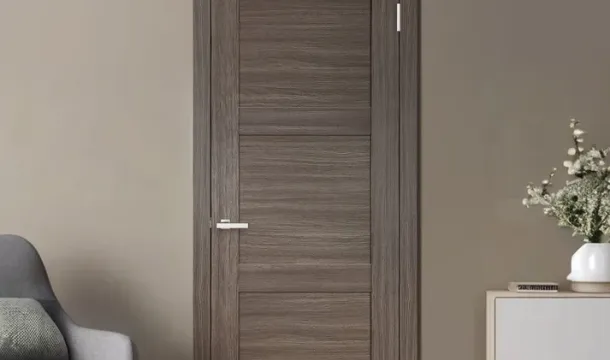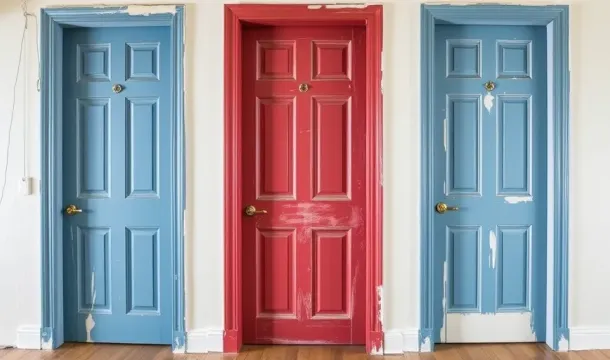Are Vinyl Interior Doors a Good Choice? Pros and Cons
Popular Articles
Choosing the right material for your household entryways can significantly impact both aesthetics and functionality. One option gaining traction is a synthetic product known for its affordability and attractive appearance. This material boasts excellent durability, making it suitable for various environments, from busy family homes to quiet retreats.
However, it's essential to weigh the benefits against potential drawbacks. While this type of barrier offers a sleek finish and resistance to moisture, some may find that it lacks the authentic feel of natural alternatives. Additionally, although maintenance is relatively simple, scratches or dents may not be as easily repaired compared to traditional wooden structures.
Assessing these elements will help you make an informed decision about whether this choice aligns with your needs. The combination of cost-effectiveness and resilience can be appealing, yet understanding the limitations is equally important in ensuring satisfaction with your selection.
Durability of Vinyl Doors
The longevity of vinyl as a building material makes it a sound selection for various settings. Known for its robust nature, this option withstands wear and tear exceptionally well, ensuring that it remains functional over time.
Scratch and dent resistance is one of the standout features, making these panels suitable for high-traffic areas. They are less prone to damage compared to traditional wooden alternatives, which can warp or splinter under pressure.
Moreover, vinyl exhibits impressive moisture resistance. Unlike wood, it won't swell or decay in humid environments, which is particularly beneficial in regions with fluctuating weather conditions. This characteristic contributes significantly to its lifespan.
In terms of maintenance, the upkeep is minimal. A simple wipe-down with mild soap and water suffices to keep these surfaces looking fresh. The material's inherent properties mean that it does not require frequent refinishing or repainting, further enhancing its practicality.
When evaluating options based on budget constraints, the affordability paired with durability presents a compelling argument for choosing this material. Its ability to retain both aesthetic appeal and functionality over extended periods makes it an excellent investment for any property owner.
In summary, if durability ranks high on your list of priorities when selecting new fixtures, this building solution offers a good balance of resilience and cost-effectiveness while maintaining an attractive appearance.
Cost Comparison with Wood
Choosing synthetic options over wood can significantly impact your budget. Synthetic materials typically offer a more affordable solution compared to their wooden counterparts, making them an appealing choice for many homeowners.
The average price for wooden models can range from $200 to $1,000 depending on the type of wood and craftsmanship involved. In contrast, synthetic alternatives often fall between $100 to $500, providing substantial savings without compromising aesthetic appeal.
While both materials have their merits, the cost-effectiveness of synthetic choices stands out. Maintenance expenses also favor synthetic options; they require less upkeep over time due to their inherent durability against moisture and warping.
However, it's essential to weigh the long-term value. Wooden variants may add resale value due to their classic appeal and longevity if properly maintained. Conversely, while synthetic doors may not have the same resale potential, their affordability makes them a good option for budget-conscious renovations or upgrades.
Ultimately, selecting between these materials involves considering initial costs versus long-term investment in durability and maintenance requirements. Evaluate your specific needs and budget constraints carefully before making a decision.
Maintenance Requirements Explained
To ensure longevity and aesthetic appeal, regular upkeep of these fixtures is necessary. Here are key maintenance aspects to consider:
- Cleansing: Use a soft cloth and mild soap solution for routine cleaning. Avoid abrasive materials that may scratch the surface.
- Inspection: Periodically check for signs of wear or damage. Address any issues promptly to maintain integrity.
- Moisture Control: Keep areas around these structures dry to prevent mold or mildew buildup, which can compromise material quality.
- Hardware Maintenance: Regularly inspect hinges and handles. Lubricate moving parts to ensure smooth operation and prevent rusting.
This type of structure offers a balance of durability and affordability, making it a good choice for various settings. With minimal effort, you can enhance the lifespan and performance of your selections.
By following these maintenance guidelines, you can enjoy all the benefits associated with this material while keeping your fixtures in optimal condition.
Sound Insulation Properties
For those prioritizing tranquility in their living spaces, selecting a suitable product can significantly enhance sound insulation. The use of specialized core materials within these panels contributes to superior acoustic performance compared to traditional wooden options. Their design minimizes noise transfer, making them an excellent selection for bedrooms or home offices where concentration is key.
The density and composition of the material play a crucial role in soundproofing effectiveness. Higher density options tend to absorb sound waves more efficiently, providing a quieter environment. Consider models that feature solid or insulated cores for optimal results.
While affordability is often a factor in decision-making, investing in quality products can yield better long-term satisfaction regarding noise reduction. However, it’s essential to evaluate potential downsides as well; cheaper variations may compromise on this aspect, leading to increased sound transmission.
Ultimately, the choice hinges on balancing budgetary constraints with the desired level of noise control. Opting for higher durability variants can further enhance acoustic properties, ensuring a peaceful atmosphere without frequent replacements or repairs.
Aesthetic Options Available
Choosing this material offers a variety of appealing designs that can enhance your space. With options ranging from smooth finishes to textured surfaces, you can find styles that complement both modern and traditional aesthetics. Many manufacturers provide customizable colors and patterns, ensuring alignment with your interior decor.
If you prefer the look of natural wood, there are realistic wood grain finishes available that mimic the appearance of solid timber while maintaining affordability. This allows homeowners to enjoy the warmth associated with wood without compromising on durability or cost.
Glass inserts are another excellent choice, adding elegance and allowing light to flow through different areas. Frosted or clear glass options can create a unique visual effect while also offering privacy where needed.
Additionally, decorative moldings can be added to enhance the overall style further. From classic raised panels to sleek contemporary designs, the versatility of this material allows for creative expression in any room.
Ultimately, selecting this type of entryway solution means you don’t have to sacrifice beauty for practicality; it combines aesthetic appeal with long-lasting performance.
Popular Articles

Choosing the Perfect Interior Doors for Your Canadian Home

A Complete Guide to Choosing Interior Doors for Canadian Homes
